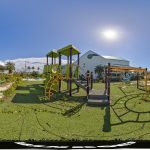URBEX Ethics for Beginners: Safety, Respect, and Rules
URBEX Ethics for Beginners: Safety, Respect, and Rules
1) Why Urbex Ethics Matter
Urban exploration sits at the crossroads of history, art, curiosity, and responsibility. Abandoned factories, empty schools, derelict hospitals, and quiet coastal forts are more than “cool spots”—they’re snapshots of social memory. Following clear urbex ethics keeps beginners safe, prevents damage, and preserves access for responsible explorers worldwide.
This manifesto is a beginner-friendly, global guide to urbex rules. It champions the classic principle—take nothing but pictures, leave only footprints—while laying out concrete behavior standards: no vandalism, no theft, no arson, no graffiti; team-first safety; respect for owners and neighbors; wildlife and hazard awareness; and responsible storytelling that doesn’t glamorize recklessness.
2) What “Urbex Ethics” Means
Urbex ethics are the shared values and practices that separate responsible explorers from trespassers who damage sites or put others at risk. In simple terms:
-
Respect the place. You’re an observer and caretaker, not a consumer or conqueror.
-
Respect people. Owners, neighbors, workers, first responders, and other explorers all deserve courtesy and safety.
-
Respect life. Your own life, your team’s, and the wildlife that often reclaims these spaces.
-
Respect truth. Tell accurate, thoughtful stories that educate and uplift the culture of urbex without encouraging harm.
3) The Golden Principle: Take Nothing, Leave Only Footprints
“Take nothing but pictures, leave only footprints” isn’t just a slogan—it’s the backbone of urbex rules:
-
Don’t take artifacts. Every receipt, ledger, doorplate, or broken dial is part of a site’s living archive. Removing “souvenirs” strips meaning from the place.
-
Don’t leave trash. Pack in/pack out. If you bring it, you take it back.
-
Don’t rearrange scenes. Staging can damage already-fragile spaces and falsify history. Document, don’t direct.
-
Don’t mark or tag. Your signature does not belong on the past.
4) Absolutely No Vandalism, Theft, Graffiti, or Arson
This is non-negotiable:
-
No vandalism. Do not break windows, pry doors, cut fences, force locks, or rip out fixtures. If entry requires destruction, it’s a no-go.
-
No theft. Taking “just a small thing” is still theft—and it destroys the site’s integrity for everyone else.
-
No graffiti. However artistic you consider it, it’s still damage here. The beauty of urbex is in witnessing decay, not overwriting it.
-
No arson or fire. Fire in abandoned structures endangers emergency responders, wildlife, neighbors, and destroys heritage outright.
These behaviors are illegal in most jurisdictions and get places shuttered, patrolled, and lost to the community.
5) Safety First (for You and Your Team)
Beginner urbexers often underestimate risk. Make safety your culture, not a checkbox.
5.1 Plan & Prepare
-
Research context. Building age, known hazards (flooding, asbestos), nearby activity, access and exit points.
-
Daylight advantage. Explore in daylight for visibility and safer navigation.
-
Tell a contact. Share your plan and expected return time with someone who isn’t going.
-
Have an exit plan. Two exits minimum. Know where you’d go if the main route fails.
5.2 Team Protocols
-
Buddy system. Two or three is ideal. Solo increases risk; large groups draw attention and cause noise.
-
Role clarity. One lead navigator, one tail (watching hazards behind), one safety spotter if present.
-
Comms. Phones fully charged; consider radios where reception fails. Establish simple call-and-response signals.
5.3 Personal Protective Equipment (PPE)
-
Footwear: Thick-soled boots (nails, glass).
-
Hands & skin: Work gloves; long sleeves and pants to avoid cuts.
-
Respiratory: At minimum, quality dust masks; for suspect sites, a properly-rated respirator (consult local regulations and safety guidance).
-
Eyes & head: Safety glasses; hard hat in heavy-decay or industrial areas.
-
Light: Headlamp + handheld flashlight + spare batteries.
5.4 Structural & Environmental Hazards
-
Test surfaces. Probe suspicious floors and stairs before loading full weight.
-
Avoid ladders & roofs unless you’re trained and conditions are clearly safe.
-
Mind edges & voids. Elevator shafts, basements, pits, and open wells can be unguarded.
-
Air quality. Dust, mold, asbestos, chemicals—minimize disturbance, don PPE, and leave if you feel unwell.
5.5 Medical & Emergency Ready
-
First-aid kit with wound care, disinfectant, bandages/tourniquet as trained.
-
Stop-and-stabilize mindset. If injured, stop, assess, stabilize, and exit/seek help deliberately.
-
Know the nearest hospital beforehand.
6) Respect for Property Owners and Neighbors
“Abandoned” almost never means “ownerless.” Respect here prevents conflicts and keeps the community safer.
-
Permission is best. When feasible, seek it. If granted, follow conditions precisely (time, areas, photo rules).
-
If approached, be courteous. Stay calm. Identify yourselves as photographers/history enthusiasts, comply with requests, and leave promptly if asked.
-
Minimize disruption. Park discreetly, avoid noise, don’t block driveways or pathways, and don’t shine lights into occupied buildings.
-
No damage to enter. If it’s locked or sealed, you don’t go in. Period.
A respectful demeanor reduces escalation, builds goodwill, and helps keep places accessible to responsible explorers.
7) Wildlife & Hazard Awareness
Abandoned spaces are often living ecosystems:
-
Expect wildlife. Birds, bats, raccoons, snakes, insects—give space, don’t corner or harass.
-
Avoid nesting areas. Don’t blast lights at roosts; move quietly and detour if necessary.
-
Do not remove animals or plants. You are a guest in a reclaimed habitat.
-
Contamination caution. Industrial sites may contain oils, solvents, heavy metals, or friable asbestos. Do not stir dust; clean your gear after visits; avoid spreading contaminants to cars/homes.
-
Pack out everything. Even “biodegradable” scraps attract pests and disrupt local fauna.
8) Responsible Storytelling (Without Glamorizing Harm)
Urbex thrives on images and stories. Share in ways that protect people, places, and the culture:
-
Show craft, not bravado. Focus on history, architecture, textures, light—not on illegal entry, trespass “flexes,” or risky stunts.
-
No staging that alters a scene. Don’t move furniture or props for “the shot.”
-
Respect privacy. Get consent before showing identifiable people; blur faces when appropriate. Don’t publish personal documents you find.
-
Be accurate. If you tell a site’s story, research dates and facts; correct errors.
-
Disclaimers help beginners. A brief note that risks exist and that you promote safe, respectful practices sets the right tone.
Responsible storytelling treats each site as a classroom, not a playground; a museum, not a stage.
9) Community Stewardship & Culture
Healthy urbex culture grows from mentorship, humility, and care:
-
Mentor beginners. Pass on safety habits, PPE expectations, and ethical norms.
-
Model restraint. Walking away from a risky entry or fragile floor is a sign of skill, not weakness.
-
Be a caretaker. If you find a serious hazard (e.g., open pit near a public path), consider notifying appropriate parties without endangering the site.
-
De-escalate online. Correct misinformation kindly; celebrate good practice; avoid dogpiling.
10) Quick-Reference: Urbex Rules Checklist (Print/Save)
Before You Go
-
Research history, hazards, weather, daylight window, nearby hospitals.
-
Tell a trusted contact your plan and return time.
-
Pack PPE (boots, gloves, respirator/mask, eye/helmet), lights, first-aid kit, water/snacks, and chargers.
-
Decide roles (lead, tail, safety). Establish signals and emergency plan.
On Site
-
Enter only without damage; abort if forced entry is required.
-
Move slowly; test floors/stairs; avoid ladders/roofs unless clearly safe.
-
Keep voices low; maintain visual contact with your team.
-
Take nothing but pictures, leave only footprints.
-
No vandalism, theft, graffiti, arson—ever.
-
Respect wildlife; detour around nests/roosts.
If Approached
-
Be courteous and calm; explain you’re documenting; comply and leave if asked.
After
-
Clean gear and boots (don’t carry contaminants home).
-
Review photos ethically (no faces/personal data without consent).
-
Share responsibly—educate rather than glamorize risk.
Final Note
Ethical urbex is not about “getting in”—it’s about getting it right. When beginners learn that urbex ethics protect life, history, and community, the hobby thrives. Take nothing but pictures, leave only footprints—and leave every place, every person, and every story better respected than before.
-

Amusement Park Brevard County California Cataloochee Chernobyl Exclusion Zone Church Croatia Factory Florida Fort Franklin County Georgia Ghost Town Government Homes Hospital Hotel Iona Italy Lee County Florida Massachusetts Military Mining Nevada New York North Carolina Orange County Osceola County Outlet Mall Pennsylvania Platinum Membership Power Plant Prison Restaurant Ruins School South Carolina Soviet Era Spain Ukraine United Kingdom USA Vehicles Volusia County World War 2
Popular Posts
- Sanibel Outlet MallFebruary 25, 2024
- Goose Creek Dr. Seuss TowerFebruary 13, 2024
- Beech Grove SchoolJuly 30, 2022
- Sanibel Outlet Mall



